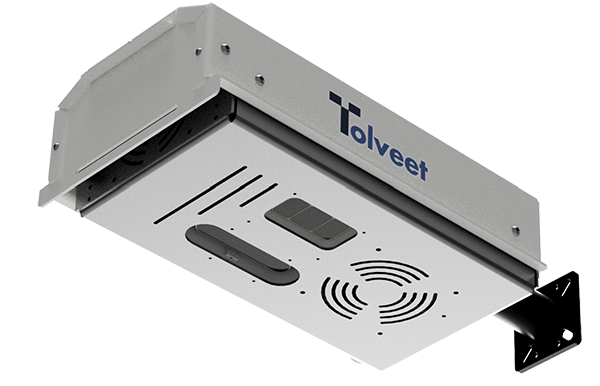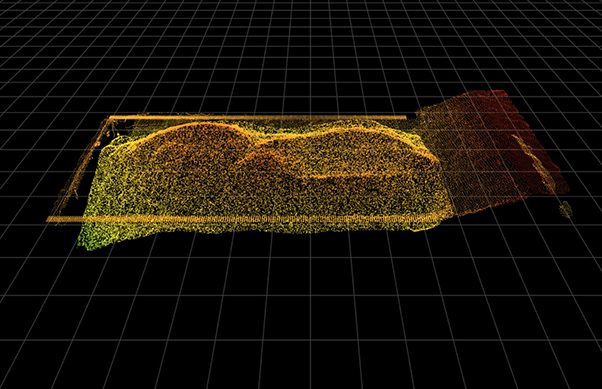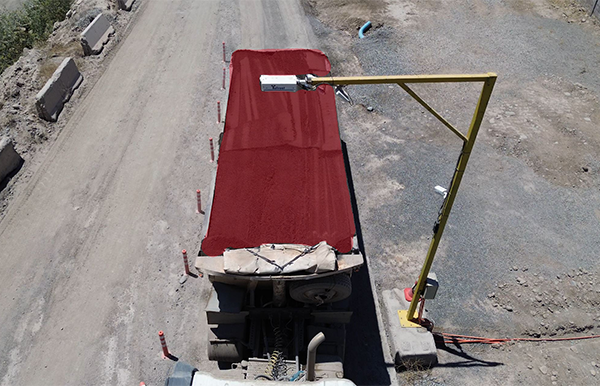Modernize Truck Load Measurement with AI‑Powered 3D Sensing
Tolveet uses proprietary multi-sensor 3D sensing and edge AI for real-time, in-motion & static scanning. Get accurate load volume, material classification, and full load auditing in one compact system.
Upgrade your truck-load workflows with faster ROI and minimal risk.
Book a Live DemoLegacy volumetric laser scanners, based on single-plane 2D LiDAR with moving optics, offer limited coverage and produce 3D reconstructions that are sensitive to vibration and vehicle motion—making them less robust for real-world use. Tolveet technology is fully 3D and multi-sensor; it stays accurate across variable site speeds and environmental conditions, delivers richer data, and has zero moving parts.

How It Works: Real-Time AI 3D Sensing
A rugged, 11 kg, pole-mounted module fuses LiDAR + stereo cameras on-device. Edge AI builds a labeled real-time 3D mesh of each pass, computes real measured load volume (including cold-start estimates without an empty bucket), and classifies material, delivering moisture independent accuracy, with no moving parts or external PC.
Autonomous load auditing with 3D models, accurate volume, and automatic truck identification, seamlessly synced with our reports and APIs. Reliable in any environment.
Differences
| Tolveet Load Volume Scanner | Legacy Volumetric Laser Scanners | |
|---|---|---|
| Multi sensor redundancy | Complementary 3D sensors work in tandem; when heavy dust, rain, glare or nightfall hinders one, the other fills the gaps. | Outdated single plane 2D LiDAR. Performance falls off rapidly in fog, blowing fines, reflective loads or low‑light conditions; operators often slow vehicles dramatically. |
| Scanning Mode | In-Motion & Static in one device (software-selectable): In-Motion = drive through; Static = brief stop for max precision. | Single-mode per install; switching modes needs new hardware & recalibration. |
| Dimensions | 621 × 248 × 210 mm, 11 kg. Mounts on a light pole or existing gantry. | 40‑60 kg laser head plus a reinforced structure and concrete base. |
| Total Cost of Ownership | Up to 10× lower CapEx; no external PC, no moving parts, OTA updates included. | USD 45k‑110k per lane plus an industrial PC and regular maintenance on moving optics. |
| Data Depth | Labelled 3‑D mesh (truck, payload, carry‑back), material classification, RFID/QR/ANPR linking and ongoing computer vision upgrades, including automatic load volume measurement. | Volume profile only; traceability and classification are optional add ons or simply unavailable. |
| Accuracy | ± 2 % (Model LVS) or ± 1 % (Model LVS-F) at normal haul‑road speed. | Advertised ± 1–3 %, but reachable only when trucks crawl under a freshly cleaned laser head; dust, vibration or normal travel speed quickly degrade precision. |
| Scalability & Upgrades | AI‑first approach: models keep learning from every scan and roll out via over‑the‑air updates, leaving headroom for future computer‑vision enhancements on the same hardware. | Hardware‑bound 2D LiDAR design; meaningful improvements usually require new sensors or an entire system replacement. |



